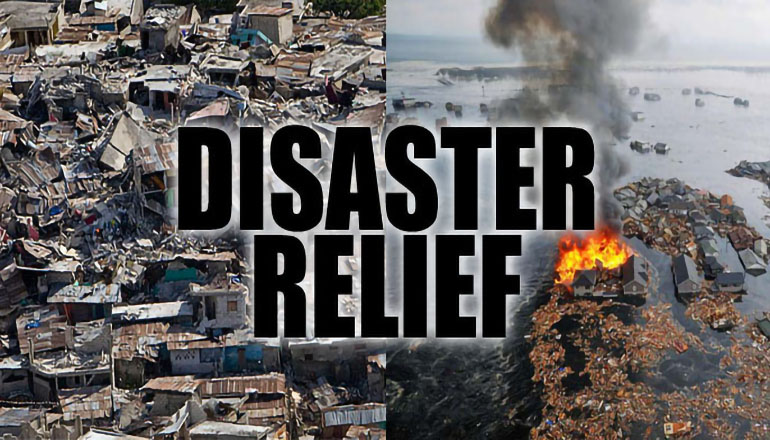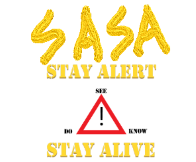How to Apply for Disaster Assistance: The First Step to Recovery

It has happened. Something unthinkable has just shook the very roots of your comfortable living. You wake up to the horrors in front of you and are just aghast at what you see. Everything you worked for, everything you paid for, your home, your personal belongings, your vehicle – it’s all gone! Perhaps you look to your side and try to fathom the thought of losing everything with your spouse, children, or other family members. As you turn to consult with them, you realize they are not there. You fear that you lost them just like you lost all your belongings and your home. For some, they may have minor damages to their home and their property. To others, their homes are inhabitable – unsafe to live in and not suitable for shelter from the elements. But for you, for your neighbors, and those who have been very unfortunate, your homes have been completely destroyed, but you fear your loved ones may have been hurt, or worse.
Every year, thousands to ten thousands of Americans fall victim to disasters. Just last year, 2021, Americans have suffered from 124 declared disasters, with dozens more impacting communities but not so much that a disaster need to be presidentially declared. According to FEMA, we have seen an unprecedented rise in natural disasters thanks to climate change. These numbers are expected to rise in 2022, with already more than three declared disasters the first month of 2022 and with several more anticipated stemming from one of the Nation’s most severe winter storm in the last 100 years. 91 million people stand to be affected as more than 13 states are blanketed with more than 11 inches of snow, blizzards, icy conditions, and a deep freeze. 17 other states will experience a terrible winter that will bring strong storms, tornadoes, winds, hail, and rain. Let’s not forget the non-natural disasters that may also occur; man-made disasters and technological disasters. But for whatever type of disaster impacts you, just remember, there are agencies out there that can assist you, during the initial response, the long recovery, future mitigation and preparedness. In this article, we will discuss the process for receiving disaster assistance after the threat has passed.
VOADS
Voluntary Organizations Active in Disasters, or VOADS for short, will be your first resource on the path to recovery. As soon as the threat strikes down on your community, VOADS are quick to respond to address the immediate and urgent need of disaster survivors. VOADS provide shelter, food and water, medical supplies, clothing, hygiene kits, comfort kits like blankets, spiritual support, crisis support, temporary financial support, among other types of immediate needs. These VOADS are your lifelines until the County and State start providing additional assistance to a larger degree. However, local and state agencies may also need assistance. Therefore, once the Governor of the state submits a disaster declaration with the President’s approval, the Federal government will step in and assist, not take over, but assist with the recovery stage.
Insurance
Insurance should be the next step in the recovery process. Most individuals have insurance, for their real property (homes, land, and businesses), their personal property (everything inside the home or business), their vehicles, and also for medical, dental, and/or life insurance. If you have insurance for any damages to your property or yourself caused by the disaster, it is HIGHLY recommended to file a claim with them first, as this can expedite the speed of your recovery. However, many individuals do not have insurance, or they are underinsured. And those with insurance, your damages may not be covered under the specific peril. For example, a majority of insurance providers do not cover flood damages or damages caused by water or an overflow of water or sewage. Sure you may want to have flood insurance, but your home has to be in a designated flood zone to qualify. So file with your insurance company first and if they don’t cover the damages or if you don’t have insurance, then the next step would be to register for disaster assistance by completing a FEMA disaster application.
Small Business Administration (SBA)
Now that you have begun the FEMA disaster assistance process and completed the application, before you can be eligible for most types of assistance, you may be required to apply for a small business loan, a home loan, or a low-interest disaster loan with the Small Business Administration (SBA). The purpose of applying for an SBA is two-fold; 1) to see if you qualify for a loan and use that loan for repairs or replacement of damages, and 2) to progress your FEMA application. These loans can be used for damages to your business, your home, and your personal property, which we will discuss a little more later. While no one likes the thought of paying back interest from loans (even if the interest rates are very low), remember that not everyone can afford to take out loans and those individuals need the limited funding from FEMA to rebuild their lives. If yo can afford a loan, please take it. It will help out those people with less income with more assistance.
FEMA Assistance
Once you have filled out your SBA loan application (this will be required by every applicant eventually) and you have been declined or partially approved, you are ready to continue with your FEMA application. At this point, you should have already completed the registration intake and described your disaster damage situation. Depending on what type of damages you have incurred from the disaster, you may be eligible for certain types of assistance to help you repair or replace those damaged items. There are two types of assistance; Housing Assistance, or HA for short and Other Needs Assistance, or ONA. Each of these types of assistance have several sub-types of assistance, ranging from Home Repair, Rental Assistance, Direct Housing, Personal Property, Transportation, Medical/Dental, and even Child Care Assistance. There are other types of assistance that may or may not be disaster-specific. It is imperative to be aware of all types of assistance. For more information, visit the Individual and Household Program page on the FEMA website at: https://www.fema.gov/assistance/individual/program.
The FEMA disaster assistance process can take up some time, especially if the survivor has several needs and the information and documentation that FEMA requests is not provided to them in a timely manner, your disaster assistance can be delayed. In a separate article, I will post a general process of how to prepare for FEMA assistance so you can have everything ready, what to expect, what are common delays, and how much the maximum is for each survivor, to make your FEMA disaster assistance easier for you.
Now What?
Once you have completed this Sequence of Delivery, you are pretty much on your own to continue your disaster recovery. The State and/or your local government may provide additional support and resources to assist you after you have received FEMA assistance. It is important that you contact your local agencies that may provide additional recovery services, after all, it is the responsibility of your local government to return its residents to a state of normalcy. And just remember, if it has happened before, more than likely it will happen again. It will be time to start investing in emergency/disaster preparedness in order to reduce the damages of a future occurrence. Invest now, or pay dearly later. Keep in mind, one of your main sources for emergency and disaster preparedness is right here at Stay Alert Stay Alive.
